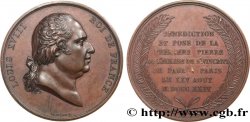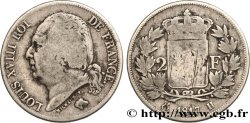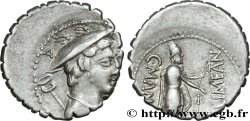Live auction - fme_518317 - LOUIS XVIII Médaille pour l’industrie, remise à Amand-Samson Bosquillon
Чтобы принять участие в торгах, вы должны войти в систему и стать подтвержденным участником аукциона. Войдите, чтобы сделать ставку. Ваш аккаунт будет подтвержден в течение 48 часов. Не ждите до закрытия торгов, чтобы зарегистрироваться.Сделав ставку на данный товар, вы вступаете в юридическое соглашение на покупку выбранного товара и нажатием кнопки «Сделать ставку» подтверждаете принятие вами условий интернет-аукционов cgb.fr.
Ставка может бить сделана только в полном эквиваленте евро. Торги закроются согласно времени, указанному в описании товара, все ставки, сделанные после закрытия торгов, учитываться не будут. Не следует откладывать предложение вашей ставки до последнего момента, так как система может не успеть обработать вашу заявку, и ваша ставка не будет принята. Более детальную информацию вы найдёте здесь: FAQ по интернет-аукционам.
Все ставки победителей подлежат комиссии 18%.
Все ставки победителей подлежат комиссии 18%.
| Оценить : | 10 000 € |
| Цена : | 6 500 € |
| Максимальная предлагаемая цена : | 9 005 € |
| Конец торгов : | 05 March 2019 18:36:43 |
| Участников : | 2 Участников |
Тип Médaille pour l’industrie, remise à Amand-Samson Bosquillon
Дата: 1823
Монетный двор / Город: 75 - Paris
Металл: gold
Диаметр: 56 mm
Ориентация осей монеты: 12 h.
Гравер GAYRARD Raymond (1777-1858) / CAQUÉ Armand Auguste (1795-1881)
Вес: 136,7 g.
Век: inscrite : AMAND SAMSON BOSQUILLON, FABRICANT DE CACHEMIRES A PARIS. LA REÇUE DE LA MAIN DU ROI LE 23 OCTOBRE 1823.
Комментарии о состоянии
Cette médaille présente de très beaux reliefs malgré des traces de nettoyage dans les champs (hairlines). Petites marques d’usure sur certains points hauts. Présence de coups et rayures
Происхождение:
Exemplaire provenant de la collection R.P.
Лицевая сторона
Аверс: легенда: LOUIS XVIII - ROI DE FRANCE.
Аверс: описание: Tête de Louis XVIII à droite, signé : GAYRARD F..
Обратная сторона
Реверс: легенда: ENCOURAGEMENTS ET RÉCOMPENSES - À L’INDUSTRIE // MDCCCXXIII.
Реверс: Описание: La France couronnée et l'Industrie avec ses attributs en arrière plan, signé sur la plinthe : REFAIT PAR CAQUE et à l’exergue : DEPUYMAURIN. D..
Комментарий
Cette médaille fut remise des mains du roi Louis XVIII à Amand-Samson Bosquillon de Marigny le 25 octobre 1823 pour l’encourager dans sa fabrication de cachemires à Paris. Bosquillon, baptisé le 15 novembre 1779 à Clermont dans l’Oise, est le fils de Jacques Louis Bosquillon de Marigny, avocat en parlement et conseiller du roi, et Angélique Parmentier de la Motte. Toujours vivant en 1848, l’inventaire après décès de sa femme, Claudine Lupin, indiquait qu’il habitait Montmartre au numéro 6 de la rue des Rosiers.
Concernant son parcours professionnel et d’après le “Rapport du jury central sur les produits de l'industrie française exposés en 1834” établi par le Baron Charles Dupin, le nom d’Amand-Samson Bosquillon “se rattache avec honneur à la création du châle de cachemire en France. Sans jamais ralentir son zèle, il a provoqué, encouragé tous les perfectionnements, les a fait mettre en pratique, et par là s’est maintenu toujours à la hauteur des progrès. Il exploite avec succès tous les genres de châles qui caractérisent la fabrique de Paris; il occupe le premier rang par l’importance de ses productions et l’étendue de son commerce à l’intérieur ainsi qu’à l’étranger. La médaille d’or qu’il obtint en 1823 [cette médaille] lui fut rappelée en 1827, le jury la confirme en 1834.” Il est également connu pour avoir apporté des perfectionnements à la machine Jacquart. Un certificat de demande de brevet d’invention et perfectionnement a été déposé en 1840.
Ce revers est initialement réalisé par B. Duvivier, vers 1797-1798, avec à l’exergue la légende “AUX ARTS UTILES / REP. FR.”, d’où la mention sur la ligne d’exergue “ REFAIT PAR CAQUÉ” et sous le millésime “DE PUYMAURIN. D.”.
This medal was presented by King Louis XVIII to Amand-Samson Bosquillon de Marigny on October 25, 1823 to encourage him in his cashmere production in Paris.. Bosquillon, baptized on November 15, 1779 in Clermont in the Oise, is the son of Jacques Louis Bosquillon de Marigny, lawyer in parliament and advisor to the king, and Angélique Parmentier de la Motte. Still alive in 1848, the inventory after the death of his wife, Claudine Lupin, indicated that he lived in Montmartre at number 6 rue des Rosiers.
Concerning his professional career and according to the “Report of the central jury on the products of French industry exhibited in 1834” established by Baron Charles Dupin, the name of Amand-Samson Bosquillon “is honorably linked to the creation of the cashmere shawl in France. Without ever slowing down his zeal, he provoked, encouraged all improvements, had them put into practice, and thereby always kept himself at the height of progress.. He successfully exploits all the types of shawls which characterize the Paris factory; he occupies the first rank by the importance of his productions and the extent of his trade at home as well as abroad.. The gold medal he obtained in 1823 [this medal] was recalled to him in 1827, the jury confirmed it in 1834. \\\"He is also known for having made improvements to the Jacquart machine. A certificate of application for a patent for invention and improvement was filed in 1840.
This reverse is originally made by B. Duvivier, circa 1797-1798, with the caption “AUX ARTS UTILES / REP” in the exergue. FR. ”, hence the mention on the exergue line “REFAIT PAR CAQUÉ” and under the year “DE PUYMAURIN. D. ”
Concernant son parcours professionnel et d’après le “Rapport du jury central sur les produits de l'industrie française exposés en 1834” établi par le Baron Charles Dupin, le nom d’Amand-Samson Bosquillon “se rattache avec honneur à la création du châle de cachemire en France. Sans jamais ralentir son zèle, il a provoqué, encouragé tous les perfectionnements, les a fait mettre en pratique, et par là s’est maintenu toujours à la hauteur des progrès. Il exploite avec succès tous les genres de châles qui caractérisent la fabrique de Paris; il occupe le premier rang par l’importance de ses productions et l’étendue de son commerce à l’intérieur ainsi qu’à l’étranger. La médaille d’or qu’il obtint en 1823 [cette médaille] lui fut rappelée en 1827, le jury la confirme en 1834.” Il est également connu pour avoir apporté des perfectionnements à la machine Jacquart. Un certificat de demande de brevet d’invention et perfectionnement a été déposé en 1840.
Ce revers est initialement réalisé par B. Duvivier, vers 1797-1798, avec à l’exergue la légende “AUX ARTS UTILES / REP. FR.”, d’où la mention sur la ligne d’exergue “ REFAIT PAR CAQUÉ” et sous le millésime “DE PUYMAURIN. D.”.
This medal was presented by King Louis XVIII to Amand-Samson Bosquillon de Marigny on October 25, 1823 to encourage him in his cashmere production in Paris.. Bosquillon, baptized on November 15, 1779 in Clermont in the Oise, is the son of Jacques Louis Bosquillon de Marigny, lawyer in parliament and advisor to the king, and Angélique Parmentier de la Motte. Still alive in 1848, the inventory after the death of his wife, Claudine Lupin, indicated that he lived in Montmartre at number 6 rue des Rosiers.
Concerning his professional career and according to the “Report of the central jury on the products of French industry exhibited in 1834” established by Baron Charles Dupin, the name of Amand-Samson Bosquillon “is honorably linked to the creation of the cashmere shawl in France. Without ever slowing down his zeal, he provoked, encouraged all improvements, had them put into practice, and thereby always kept himself at the height of progress.. He successfully exploits all the types of shawls which characterize the Paris factory; he occupies the first rank by the importance of his productions and the extent of his trade at home as well as abroad.. The gold medal he obtained in 1823 [this medal] was recalled to him in 1827, the jury confirmed it in 1834. \\\"He is also known for having made improvements to the Jacquart machine. A certificate of application for a patent for invention and improvement was filed in 1840.
This reverse is originally made by B. Duvivier, circa 1797-1798, with the caption “AUX ARTS UTILES / REP” in the exergue. FR. ”, hence the mention on the exergue line “REFAIT PAR CAQUÉ” and under the year “DE PUYMAURIN. D. ”







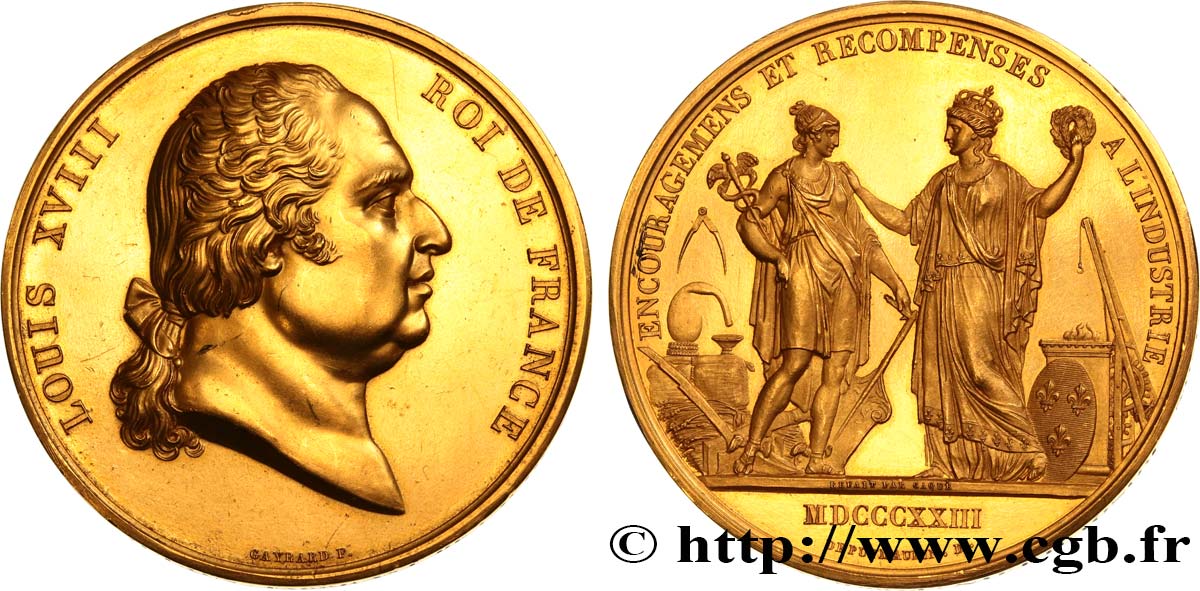
 Cообщить об ошибке
Cообщить об ошибке Распечатать страницу
Распечатать страницу Отправить мой выбор
Отправить мой выбор Задать вопрос
Задать вопрос Consign / sell
Consign / sell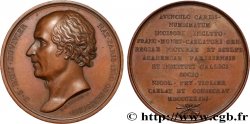
 Информация
Информация


